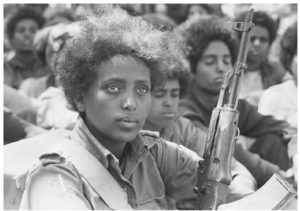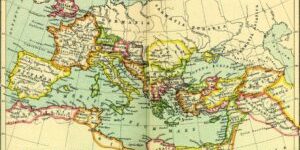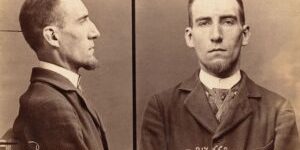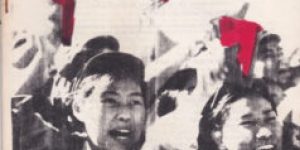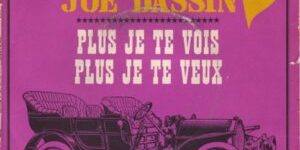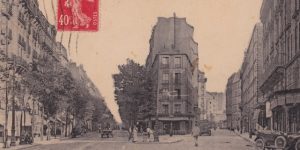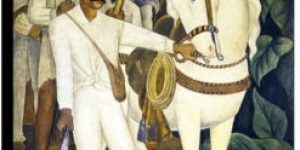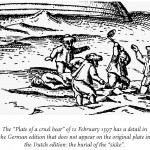Michael Weldeghiorghis Tedla ~ The Eritrean Liberation Front: Social And Political Factors Shaping Its Emergence, Development And Demise, 1960-1981
No Comments yetIntroduction
In the second half of the twentieth century, Eritrea was an arena of uninterrupted armed conflict that went on for about three decades. The conflict was basically rooted in history and geography. But it was also aggravated by outside intervention for many years. Ethiopia being supported first by the US, Israel, and latter on by the USSR, and the Eritrean nationalists by socialist oriented Middle Eastern and Asian countries and organizations turned Eritrea into a proxy battle field between opposing forces during the Cold War era.
The protracted Eritrean war of independence started in 1961 under the auspices of the Eritrean Liberation Front (ELF). The ELF (1960-1981) was the first, and largely Muslim-based, armed resistance movement that emerged to contest Ethiopian rule over Eritrea. Formed in 1960, the ELF carried out political and military activities for the subsequent twenty years in an attempt to gain independence. This armed resistance movement was, however, unable to accomplish its stated goals of achieving independence. Rather, the task of achieving de facto independence was realized by its offspring organization in 1991. This study is, therefore, an attempt to reconstruct the history of a socio-political movement that has been important in the recent history of Eritrea: the Eritrean Liberation Front. In the following sections an attempt is made to outline the fundamental research problem and the motivation for my interest in undertaking the intended study, research questions, scope of the study, theoretical framework, methodology, relevance of the study, and organization of the thesis.
Problem Statement and Rationale
In 1950, the UN passed a resolution that federated Eritrea with Ethiopia, without any form of plebiscite. Within few years, Ethiopia dismantled the pillars of the federation that guaranteed Eritrea’s limited autonomy one by one without hesitation. Throughout the federal period, Eritreans protested against Ethiopia’s violations of the Eritrean autonomy. As it became quite difficult to organize and agitate inside Eritrea, the task of organizing a movement to promote the Eritrean cause fell on the Diaspora. Frustrated with the system, a new breed of Eritrean nationalists founded the underground Eritrean Liberation Movement (ELM)[i] in Port Sudan in 1958. The ELM sought to terminate Ethiopian rule through a coup d’état. But before the ELM could attempt a coup, the war for independence was launched in 1961 under the auspices of the ELF.[ii] After that the country lapsed into a cycle of political disorder, violent conflict and human suffering in the three decades that followed.
The founders of the ELF were Eritrean political exiles and students in Cairo, Egypt, who drew inspiration from the Algerian revolution.[iii] The initial ELF leaders, who were living abroad, came mainly from Muslim backgrounds and this had a profound impact on the membership and mobilization of the ELF. Consequently, during the early years of the first decade of its history, the movement favoured Muslims over Christians.[iv]
In the 1960s, the movement nevertheless grew steadily as it started to attract support from diverse segments of the population and from the Diasporas. The fighters (also called Tegadelti in Tigrinya, one of the most widely spoken languages in Eritrea) were individuals who came from diverse economic, social, educational, gender, and age backgrounds and came to be marked by their devotion to the success of the struggle. Some of the early fighters received training in Syria, China, Cuba, and Iraq; whilst the rest were trained in the liberated areas. Within the next ten years, the ELF became a serious threat to the Ethiopian rule in Eritrea. The impact of its existence was felt beyond the boundaries of Ethiopia, especially when Ethiopian planes were subjected to subversive activities. In 1970, there was a major breakaway from the initial movement. Three splinter groups emerged and latter coalesced to form the Eritrean People’s Liberation Front (EPLF), which became a strong rival to the parent Front. The ELF remained a viable organization for the next ten years, but in the 1970s a series of armed clashes between the two dominant movements occurred. These clashes were typically exemplified by a struggle for dominance. Finally, in 1982, the EPLF superseded the ELF and other smaller groups as the most effective armed resistance to the Ethiopian forces, and defeated the ELF in the process. The ELF fighters fled to Sudan, and many went on to Europe and North America, while some members opted to return to Eritrea and join the rival nationalist movement, the EPLF.
In May 1991, the EPLF took control of the whole country from Ethiopia and Eritrea achieved its de jure independence in 1993 after holding a UN observed referendum, in which 99.8 percent of Eritreans voted for sovereignty. The EPLF transformed itself into the People’s Front for Democracy and Justice (PFDJ) in 1994 and has been leading the country since its independence.
The ELF, emerging years before its rival the EPLF, and having been in a position of prominence in military terms with regard to the latter, nevertheless was superseded and destroyed in a relatively short period of time. This calls for investigation into the reasons why one movement, from the outside looking stronger, so spectacularly failed not only to achieve its aims but even to maintain itself as an organization, while a seemingly weaker front, the EPLF, not only managed to outflank and supersede its rival but also went on to occupy the whole of Eritrea. The Eritrean example, in this manner, offers a unique comparative example of two movements with different strategies and with very different fortunes. Although it is beyond the scope of the study to address the ELF from a comparative dimension, it is important to at least note that the Eritrean example may hold general lessons on the variables that affect the viability and strength of national-revolutionary movements.
In my previous career as a junior researcher and archivist at the Research and Documentation Centre (RDC), the acting national archive of Eritrea, from 2004 to 2012, I was confronted with a large amount of archival materials concerning the movement in question. Despite the availability of such bulky serviceable source materials, the history of the Eritrean struggle for independence remained by and large incomplete and undeveloped.[v]
This absence of well researched publications and analysis poses a challenge in developing a broader understanding of the dynamics of the Eritrean politics prior to the independence of the country. This experience instilled in me the desire to study the nature and development of the ELF using the idea of writing history from the stand point of those former ELF fighters. In this study,special attention has been given to its origin, development, and demise of the movement, and the how and why questions have also been investigated thoroughly.
Download book (PDF): https://openaccess.leidenuniv.nl/bitstream/ASC-075287668-3671-01.pdf?
Notes
[i] Ruth Iyob, The Eritrean Struggle for Independence: Domination, Resistance, Nationalism, 1941-1993 (Cambridge: Cambridge University Press, 1995), 98-101; see also Dan Connel and Tom Killion. Historical Dictionary of Eritrea (2nd ed.) (Lanham, Toronto and Plymouth, UK: The Scarecrow Press, Inc., 2011), Connel and Killion, 218-20.
[ii] Ruth, 103; see also Redie Bereketeab, “Eritrea: The Making of a Nation 1890-1991” (PhD. diss., Uppsala University, 2000), 183-184.
[iii] John Markakis, National and Class Conflict in the Horn of Africa (Cambridge: Cambridge University Press, 1987), 113.
[iv] Redie, 185
[v] Bairu Tafla, “Interdependence through Independence: The Challenges of Eritrean Historiography,” in New Trends in Ethiopian Studies, ed. Harold G. Marcus. (Lawrenceville: Red Sea Press, 1994), 500.
Comments
Leave a Reply
